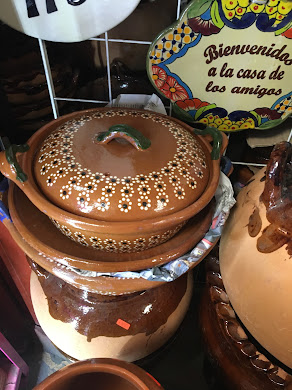I recently discovered two different types of 3D maps, made by traditional seafarers in Greenland and the Marshall Islands.
The ones from Greenland are carved from wood and depict sections of coastline, while the ones from the Marshall Islands (like the one on the left) are made of thin wooden slats tied together, and cowrie shells, and depict ocean currents.
Carved wooden maps from Greenland
 An article at Atlas Obscura presents carved wooden maps made by the Tunumiit people of Greenland before contact with Europeans. It says, "the
maps show how the Tunumiit cognitively organized their world, and have
captured the imaginations of map enthusiasts around the world for over
half a century. But as time passes the maps have acquired a new
mythology that doesn’t quite suit them. Anecdotal descriptions of the
maps online today compare them to some sort of archaic, ruggedized
handheld GPS device: waterproof, small enough to fit inside a mitten,
and naturally buoyant. It’s easy to picture a lonely seal hunter in his
kayak using the map to navigate through an archipelago by the light of
the moon. But this is how we use modern maps, as roadside companions,
and suggesting that the Tunumiit used them the same way is ...
Eurocentric...[since] there is, in fact, no
ethnographic or historical evidence that carved wooden maps were ever
used by any Inuit peoples for navigation in open water, and there are no
other similar wooden maps like these found in any collection of Inuit
material anywhere else in the world"
An article at Atlas Obscura presents carved wooden maps made by the Tunumiit people of Greenland before contact with Europeans. It says, "the
maps show how the Tunumiit cognitively organized their world, and have
captured the imaginations of map enthusiasts around the world for over
half a century. But as time passes the maps have acquired a new
mythology that doesn’t quite suit them. Anecdotal descriptions of the
maps online today compare them to some sort of archaic, ruggedized
handheld GPS device: waterproof, small enough to fit inside a mitten,
and naturally buoyant. It’s easy to picture a lonely seal hunter in his
kayak using the map to navigate through an archipelago by the light of
the moon. But this is how we use modern maps, as roadside companions,
and suggesting that the Tunumiit used them the same way is ...
Eurocentric...[since] there is, in fact, no
ethnographic or historical evidence that carved wooden maps were ever
used by any Inuit peoples for navigation in open water, and there are no
other similar wooden maps like these found in any collection of Inuit
material anywhere else in the world"
It goes on to explain that the Inuit people have traditionally used carvings "to accompany stories and illustrate important information
about people, places, and things", and says, "a wooden relief map, would have
functioned as a storytelling device, like a drawing in the sand or snow,
that could be discarded after the story was told. As geographer Robert
Rundstum has noted, in Inuit tradition, the act of making a map was
frequently much more important than the finished map itself. The real
map always exists in one’s head."
Stick charts from the Marshall Islands
 The Marshall Islands stick charts, which date from at
least the middle of the nineteenth century are called "rebbelibs, medos, and mattangs" in local languages. They focus not on land forms or coastlines but on the sea itself and particularly the ocean currents--which tells you something crucial about the way the people here see the world.
The Marshall Islands stick charts, which date from at
least the middle of the nineteenth century are called "rebbelibs, medos, and mattangs" in local languages. They focus not on land forms or coastlines but on the sea itself and particularly the ocean currents--which tells you something crucial about the way the people here see the world.
National Geographic says there are two different types of charts: "The first and probably older
type... contains abstract representations of how waves
interact with bodies of land in general. The second type illustrates
actual islands, often represented by cowrie shells, along with swell
patterns identified and recorded by pilots. “There aren’t that many
examples from across the Pacific of this kind of navigational knowledge
being encoded or physically represented,” says anthropologist Joseph
Genz of the University of Hawaii. He says the charts were used mainly as
teaching devices rather than real-time way-finders. They help to impart
perhaps the most crucial concept in the Marshallese navigational
tradition, that of the dilep, or “backbone wave.” “People still
describe the dilep as the most important wave to find,” Genz says.
“It’s like a path you can follow to the next atoll. Instead of going
landmark to landmark, you go seamark to seamark.”
For more on traditional indigenous world views and in particular the ocean navigation of the Pacific Island peoples, read Wade Davis's book The Wayfinders: Why Ancient Wisdom Matters in the Modern World.








